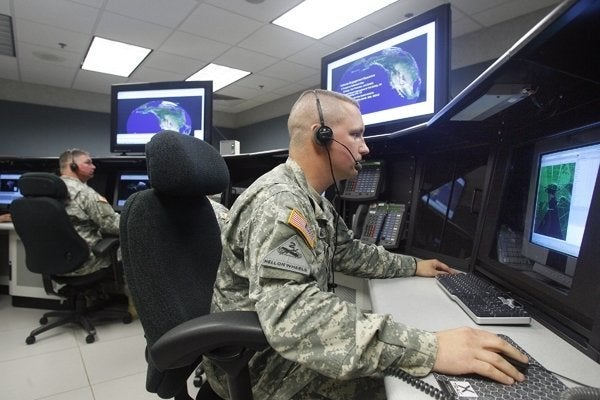
In the Cold War, Mutually Assured Destruction--AKA MAD--was Strangelove come to life.
Kids of my generation spent lifetimes in ridiculous bomb shelters wondering if the lead in a pencil could protect us from imminent destruction. I can still see the can of beans in our basement lined up like a Maginot Line, next to the soup long before anyone told us soup is good food. At least we the pipsqueaks and our designated representatives had a plan: the only way we could keep the Soviets from blowing us to smithereens was to make sure we could blow them to smithereens...and to make sure they knew it.
With apologies to Stanley Kubrick, the truly insane truth of the matter is that MAD actually worked. We know that now beyond a shadow because no one was blown to smithereens. You could look it up.
The Cold War, like "Dr. Strangelove," was shot in black and white. Us and them. No-good no-Godders versus the God Squad. Capitalists and Communists. Anyone with a fourth grade education could understand smithereens meant we might have to destroy our country in order to save it.
In the decades since Slim Pickens launched and then haunched a nuclear warhead into Kubrick's Armageddon, an even stranger thing has been happening to our nuclear debate. Smithereens is making a comeback but it's not what you think. Before all we needed was bombs and more bombs pointed at the Russkies. Now we need bombs, mo' better bombs, and missile shields like the world has never seen before, just because.
Because why? Because we have to feed the bulldog: those butt-ugly card-carrying descendants of President Dwight D. Eisenhower's military-industrial complex, the one he warned about so presciently in his 1960 farewell address.
Rest assured, mutually or not: missile shields mean slapping on a nuclear condom and hoping like hell it won't spring a leak.
The best example of Trojan shield-think comes from Brian T. Kennedy, president of the conservative Claremont Institute and a member of the Independent Working Group on Missile Defense. Kennedy says outbound President George W. Bush "will leave office with only a rudimentary system designed to stop a handful of North Korean missiles launched at our West Coast."
That's it? For all Ronald Reagan's talk of "Star Wars," more than two decades later the best we can do is protect ourselves rudimentarily against a regime known to pop out one dud after another?
Sounds like we're up the creek, doesn't it? With no real missile shield to begin with, how have we managed top survive as one nation under God for God's sake?
Now you're getting the picture: the ever-widening maw of the military industrial complex requires threat inflation--care for a mushroom cloud, anyone?--the notion that we could be under imminent attack from pretty much anywhere at any time at all. Not only that: for a shield to be worth the appropriation it's printed on we have to be on perpetual alert from every potential enemy. If you thought Vice President Dick Cheney's "one percent" policy was problem--treat a one percent chance of attack as imminent--wait until you get a look at a bill protecting the fruited plain from every enemy in the book.
No shield will be big or expensive enough to keep Fortress America wrapped up tighter than Madonna's hammies. And if perchance said shield comes up short then the whole system will be down the crapper, and the military industrial complex can start all over again doing what it does best--making money.
That's why they call it a complex. Strange, isn't it?
